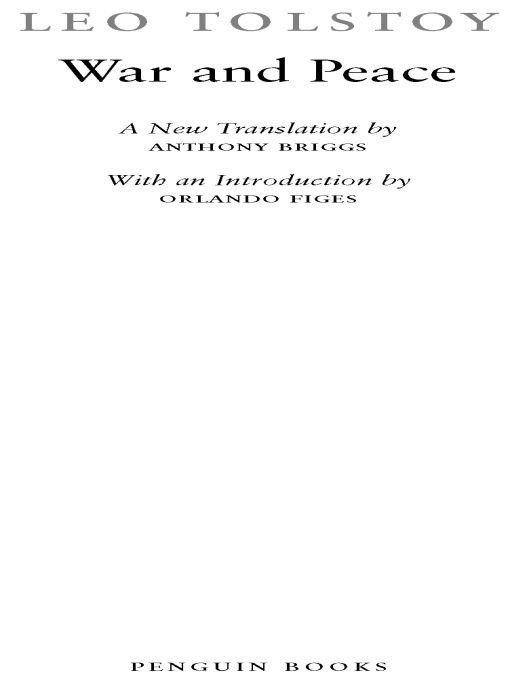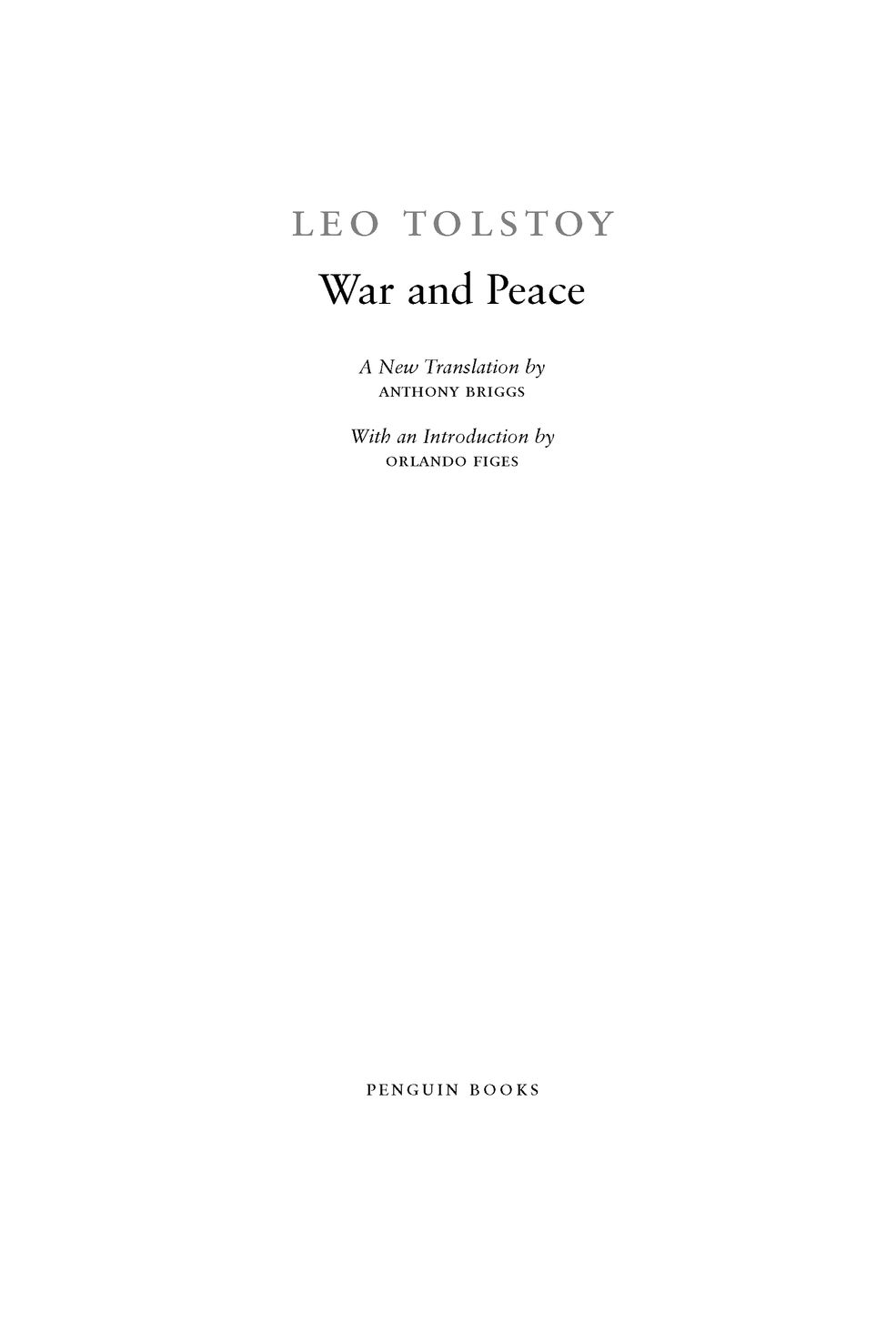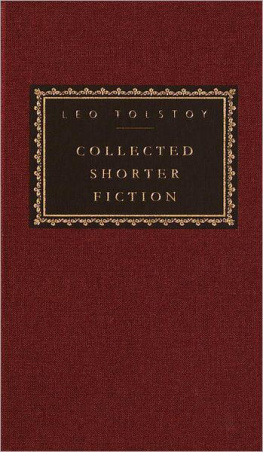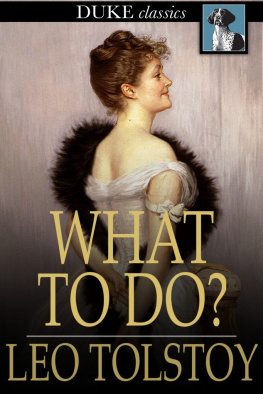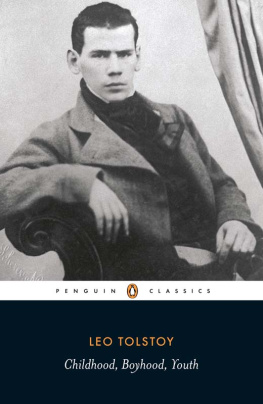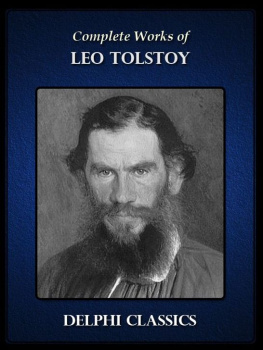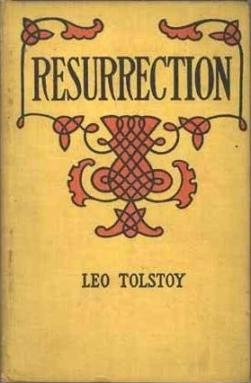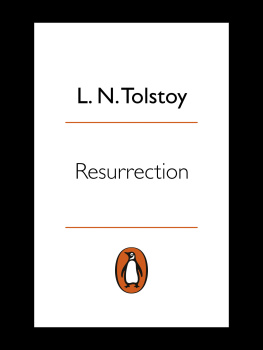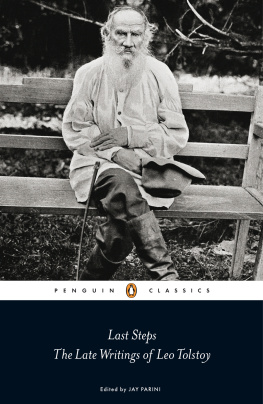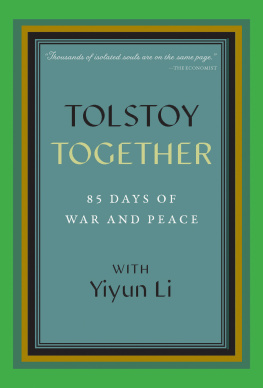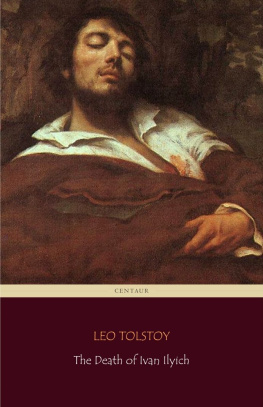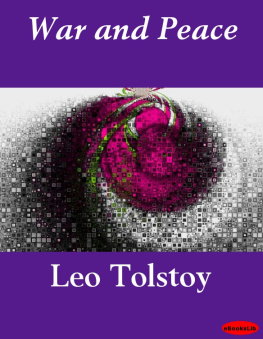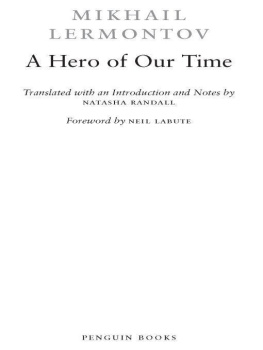Table of Contents
WAR AND PEACE
COUNT LEO TOLSTOY was born in 1828 on the family estate of Yasnaya Polyana in the Tula province. He studied Oriental languages and law at the University of Kazan but left before completing a degree. In 1851 he joined an artillery regiment in the Caucasus. He took part in the Crimean War and after the defense of Sevastopol wrote The Sevastopol Sketches (1955), which established his literary reputation. After leaving the army in 1856, Tolstoy spent time in St. Petersburg and abroad before settling at Yasnaya Polyana, where he involved himself in the running of peasant schools and the emancipation of the serfs. In 1862 he married Sofya Andreevna Behrs; they had thirteen children. Tolstoy wrote two great novels, War and Peace (1869) and Anna Karenina (1877), as well as many short stories and essays. He died in 1910.
ANTHONY BRIGGS has written, translated, or edited twenty books in the fields of Russian and English literature, including volumes on Tolstoy and Pushkin. A former professor of Russian at the University of Birmingham, he lives in England.
ORLANDO FIGES is the author of A Peoples Tragedy: The Russian Revolution 1891-1924 (recipient of the Wolfson Prize for History and the Los Angeles Times Book Prize) and Natashas Dance: A Cultural History of Russia and a professor of history at the University of London.
To request Penguin Readers Guides by mail (while supplies last), please call (800) 778-6425 or e-mail reading@us.penguingroup.com.
To access Penguin Readers Guides online, visit our Web site at www.penguin.com.
Introduction
by Orlando Figes
In 1951, after reading War and Peace for the twelfth time, the Russian writer Mikhail Prishvin (18731954) noted in his diary that he felt, at last, that he understood his life. Like all great works of art, Tolstoys masterpiece has the capacity, on each successive reading, to transform our understanding of the world.
On any first reading, War and Peace is bound to dazzle with its immense panorama of humanity. The whole of life appears to be contained in its pages. Tolstoy presents us with a cast of several hundred characters. Yet to each one he brings such profound understanding of the human condition, with all its frailties and contradictions, that we recognize and love these characters as reflections of our own identity.
Tolstoy has an extraordinary clarity of expression a quality which Anthony Briggs has happily maintained in this superb translation. Tolstoy might write longer novels than anybody else, but no other writer can re-create emotion and experience with such precision and economy. There are scenes in War and Peace the unforgettable depiction of the Battle of Austerlitz, for example, or the ball where Natasha Rostov meets Prince Andrey in which Tolstoy manages in a few words to sketch the mental images which allow us to picture ourselves at the scene and seemingly to feel the emotions of the protagonists. There are passages, like the death-scene of Prince Andrey, in which Tolstoy may give to his readers the extraordinary sensation that they too have felt the experience of death; and moments, like the wonderful description of the hunt, when Tolstoy lets them imagine what it is like to be a dog.
Tolstoy once said famously that War and Peace was not meant to be a novel at all. Like all great works of art, it certainly defies all conventions. Set against the historical events of the Napoleonic Wars, its complex narrative development is a long way from the tidy plot structure of the European novel in its nineteenth-century form. Tolstoys novel does not even have a clear beginning, middle and end, though it does, in one sense, turn on a moment of epiphany, the year of 1812, when Russias liberation from Napoleon is made to coincide with the personal liberation of the novels central characters.
While clearly still a novel, War and Peace can be understood, at another level, as a novelists attempt to engage with the truth of history. Tolstoys interest in history developed long before his career as a novelist. But history-writing disappointed him. It seemed to reduce the richness of real life. For whereas the real history of lived experience was made up of an infinite number of factors and contingencies, historians selected just a few (for example, the political or the economic) to develop their theories and explanations. Tolstoy concluded that the histories of his day represented perhaps only 0.001 per cent of the elements which actually constitute the real history of peoples. He was particularly frustrated by the failure of historians to illuminate the inner life of a society the private thoughts and relationships that make up the most real and immediate experience of human beings. Hence he turned to literature.
During the 1850s Tolstoy was obsessed with the idea of writing a historical novel which would contrast the real texture of historical experience, as lived by individuals and communities, with the distorted image of the past presented by historians. This is what he set out to achieve in War and Peace.
Through the novels central characters Tolstoy juxtaposes the immediate human experience of historical events with the historical memory of them. For example, when Pierre Bezukhov wanders as a spectator on to the battlefield of Borodino he expects to find the sort of neatly arranged battle scene that he has seen in paintings and read about in history books. Instead, he finds himself in the chaos of an actual battlefield: $
Everything Pierre saw on either hand looked so indistinct that, glancing left or right over the landscape, he could find nothing that quite lived up to his expectations. Nowhere was there a field of battle as such, the kind of thing he had expected; there was nothing but ordinary fields, clearings, troops, woods, smoking camp-fires, villages, mounds and little streams. Here was a living landscape, and try as he might he could not make out any military positioning. He could not even tell our troops from theirs. (Vol. III, Book II, ch. 21)
Having served as an officer in the Crimean War (18546), Tolstoy drew from his own experience to recreate the human truth of this celebrated battle, and to examine how its public memory could become distorted by the medium of written history. As Tolstoy shows, in the confusion of the battle nobody can understand or control what occurs. In such a situation, chance events, individual acts of bravery or calm thinking by the officers can influence the morale of the troops en masse and thus change the course of the battle; and this in turn creates the illusion that what is happening is somehow the result of human agency. So when the military dispatches are later written up, they invariably ascribe the outcome of the battle to the commanders, although in reality they had less influence than the random actions of the rank and file. By using these dispatches, historians are able to impose a rational pattern and historical meaning on the battle, although neither was apparent at the time of fighting.
As a novelist, Tolstoy was interested most of all in the inner life of Russian society during the Napeolonic Wars. In

